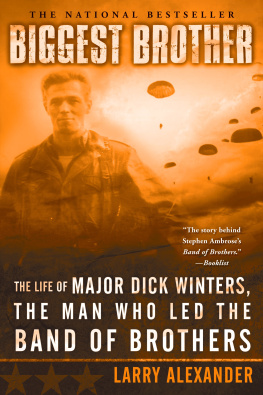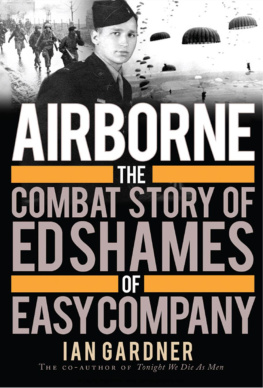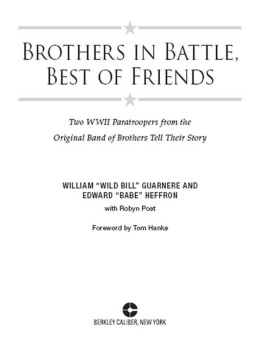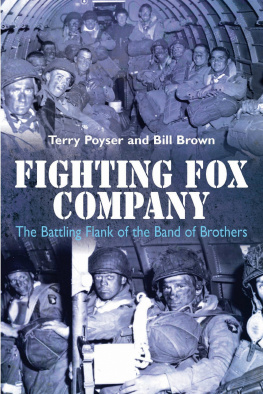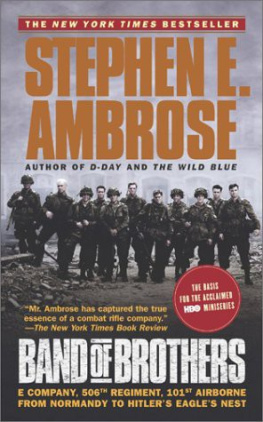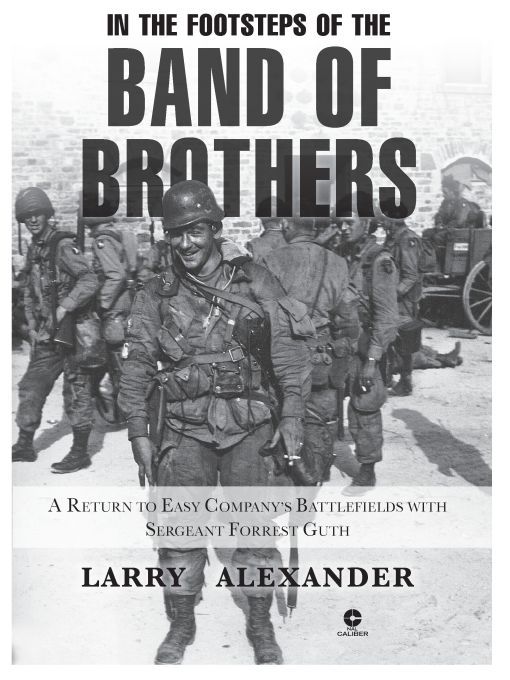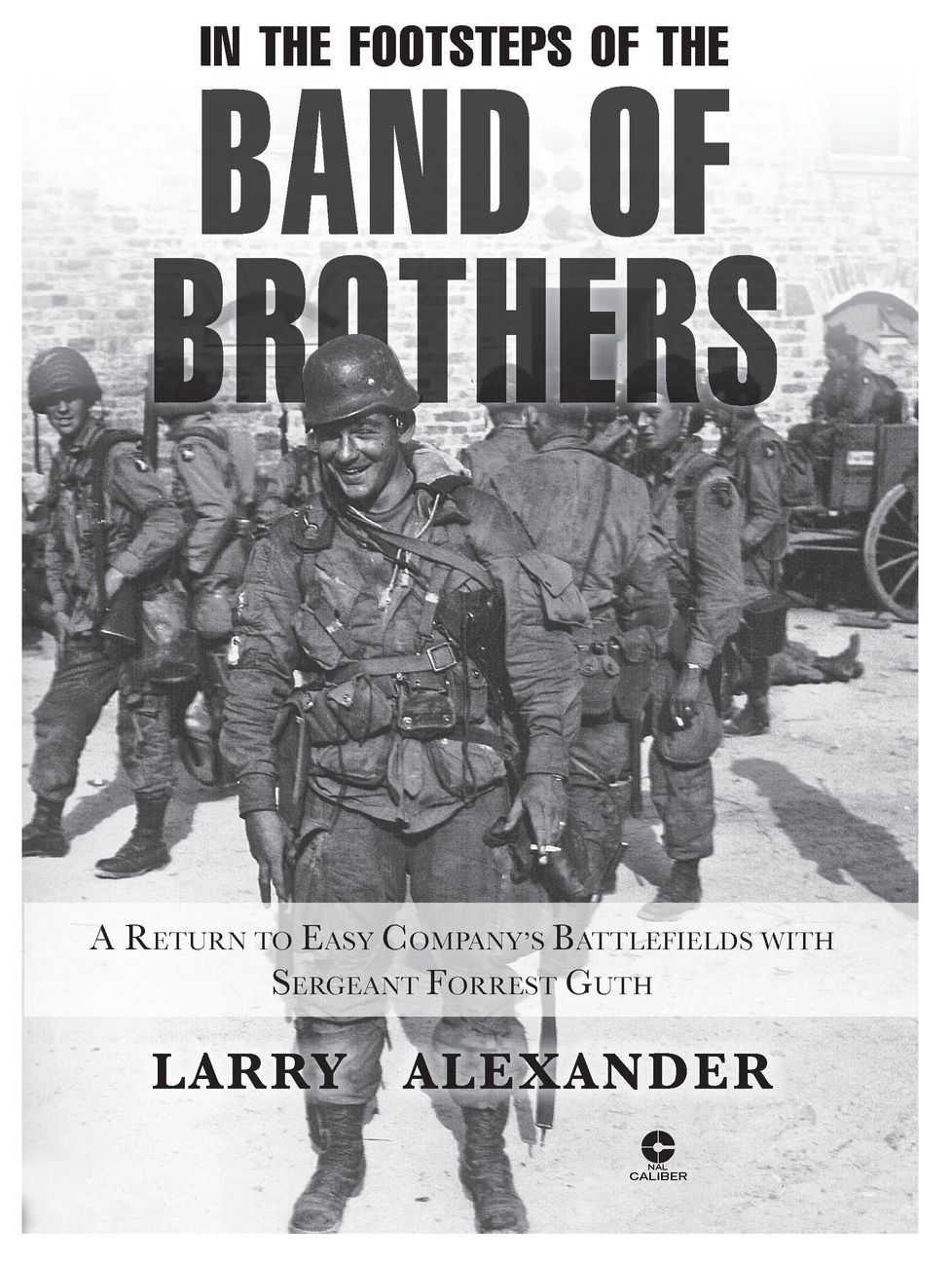Table of Contents
ALSO BY LARRY ALEXANDER
Biggest Brother:
The Life of Major Dick Winters,
the Man Who Led the Band of Brothers
Shadows in the Jungle:
The Alamo Scouts Behind Japanese Lines in World War II
Dedicated in fond memory of
FORREST LEROY GUTH
1921-2009
INTRODUCTION
In the summer of 2008, my agent, Dave Robie, and I traveled to New York City for a lunch meeting with my editors, Claire Zion and Brent Howard of New American Library (NAL). This foray to the Big Apple was a chance for me to talk to my editors face-to-face, rather than via the phone or the even more impersonal e-mail. It was, in part, a get-acquainted meeting, but it was also to provide me with an opportunity to bounce some ideas for future books off of them.
My first book, Biggest Brother: The Life of Major Dick Winters, the Man Who Led the Band of Brothers, had been out for about three years and my second book, a Pacific version of Band of Brothers entitled Shadows in the Jungle: The Alamo Scouts Behind Japanese Lines in World War II, was with the publisher and set for a February 2, 2009, release.
But what was next?
I presented a few suggestions, one of which drew some interest, although none was greeted with banners and ticker tape. Then I rolled out a concept I had tucked away in the corner of my brain reserved for off-the-wall, Id like to do this, but dont know if its practical ideas.
Id fallen in love with World War IIif one can fall in love with a wararound 1959. I was eight years old and I had just gone to the old Main Theater in my hometown of Ephrata, Pennsylvania, and seen my first war movie, The Naked and the Dead, Hollywoods attempt to bring to the screen Norman Mailers gritty novel. (That book introduced us to the term fug, which Mailer created after he was banned from using the actual four-letter word in print.)
Up until then I doubt if Id even been aware that there had been such a thing as World War II, because I recall asking my grandparents, Was there a war in 1944? which was only seven years before I was born.
From that time on, I became engrossed in learning all I could about this huge conflict that affected so many millions of lives, including my own, caught up as we were in the Cold War years that were a direct result of that earlier struggle.
At first what I knew of World War II came from comic books, both those based on fact and those grounded in fantasy, where heroes like Sgt. Fury and his Howling Commandos and Sgt. Rock single-handedly, it seemed, brought down the Third Reich. I watched and enjoyed every war movie Hollywood ever made, even those flag-waving wartime flicks that overflowed with propaganda and racial slurs. (Scratch one squint-eye, a marine says when he shoots a Japanese sniper in the 1943 film Guadalcanal Diary.)
The comic book phase was followed by novels and historical works, especially those with lots of photos. And the more I learned, the more I wanted to actually see the war-ravaged places that appeared in those mostly black-and-white pictures, and walk those bloody grounds where so many fought and sacrificed.
Gradually, I became aware that the veterans of that war were all around me, and could tell me their stories firsthand. When I met my wife, Barbara, I discovered that her father, Israel S. Gockley, was one of these men. Issy had been in Easy Company, 334th Infantry Regiment, 84th Division, rising from a private to a sergeant and assistant squad leader during the Battle of the Bulge. Like many vets, he didnt talk much about the war and, indeed, tried to bury it deep within and forget it. At this he was successful. But one terrible engagement at Beho, Belgium, on January 23, 1945, during which his company, out in front of the regiment, held their ground and were nearly overrun by an SS Panzer unit, was one even the determined Issy could not forget.
In 1983 I had the honor of taking Issy to his firstand onlydivision reunion, and met some of the men he talked about. Hearing their stories planted an urge deep inside me to one day walk the ground at Beho where he and his comrades almost came to grief.
The desire to visit the battlefields of World War II was further inflamed when I became a newspaper reporter. Around Memorial Day and Veterans Day, I interviewed scores of men from World War I through Desert Storm. But it was the World War II guys who enthralled me most. It was such a terrible yet heroic struggle fought on a battlefield that stretched around the globe, and against deeply evil forces.
Then came Band of Brothers, both the book and the miniseries, and I met and became friends first with Dick Winters, and then with Forrest Guth. Through knowing them, and seeing the movie, their story became so tangible to me that I knew I just had to visit their fields of glory.
I had to walk in their footsteps.
That was the idea I now laid out over that luncheon meeting in Manhattan, a historical memoir and travelogue that involved me traveling to these sites accompanied by an Easy Company veteran, recording his memories and emotions, and weaving into that my own impressions of those fields today, both as a historian and a writer.
I was not at all certain how I would accomplish this task, or even if it was feasible, which is why I tucked it away in my minds later file. But since my other suggestions seemed to crash and burn ( publishing is a tough business), I thought, What the hell? and brought my idea out. As I described my project, I saw Brents eyes light up. He especially liked the part about taking a veteran along.
At this meeting, we did not agree that this would, indeed, be my next book for NAL, mainly because I still wasnt sure I was good enough to pull off this huge plan. But the favorable impression it left on Brent encouraged me, so I began looking into the possibility.
The first thing I had to do was line up an Easy Company veteran. I knew Dick Winters, at age ninety, was out, so my first choice was Forrest Guth.
I had met Forrest in 2001 around the same time I met Dick Winters. After the war, Forrest had attended and graduated from what was then called Millersville State Teachers College in Millersville, Pennsylvania. Forty years later, I graduated from what is now called Millersville University, and in 2001, after I had become a journalist, I was asked to write an article for Millersvilles alumni magazine about the schools Band of Brothers alumnus.
I did, interviewing him over the phone at his home in Delaware. After that, Forrest and I ran into each other a number of times over the next couple of years, including at a birthday party for Dick Winters, and our friendship developed.
In December 2007 Forrests wife of almost sixty years, Harriet, a lady I had met many times and grew to enjoy, passed away. I thought about this when I called Forrest in August 2008 to propose the trip, thinking it would be a good way to get his mind off his grief. He agreed to go along without hesitation.
The trip was not a definite yet. I still had to line up guides and my itinerary, and get the whole package blessed by NAL.
For the guides, I turned to my Internet friends of the Wild Bill Guarnere and Major Dick Winters Web sites. These folks responded admirably. Both Linda Cautaert, living in Holland, and a San Francisco woman, BK Masterson, recommended Paul Woodadge of Battlebus. Paul, a Brit who lives in Normandy, specializes in



